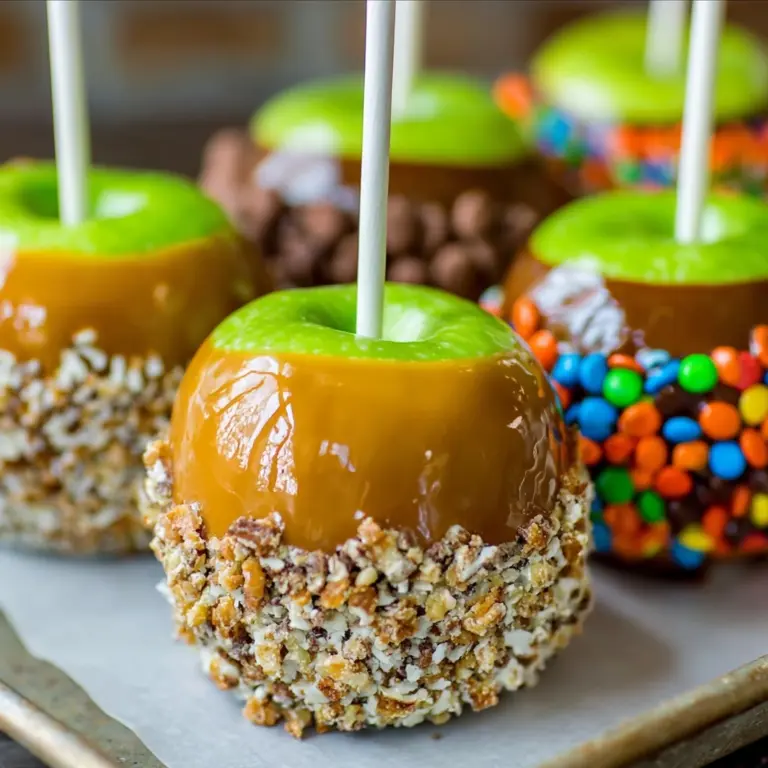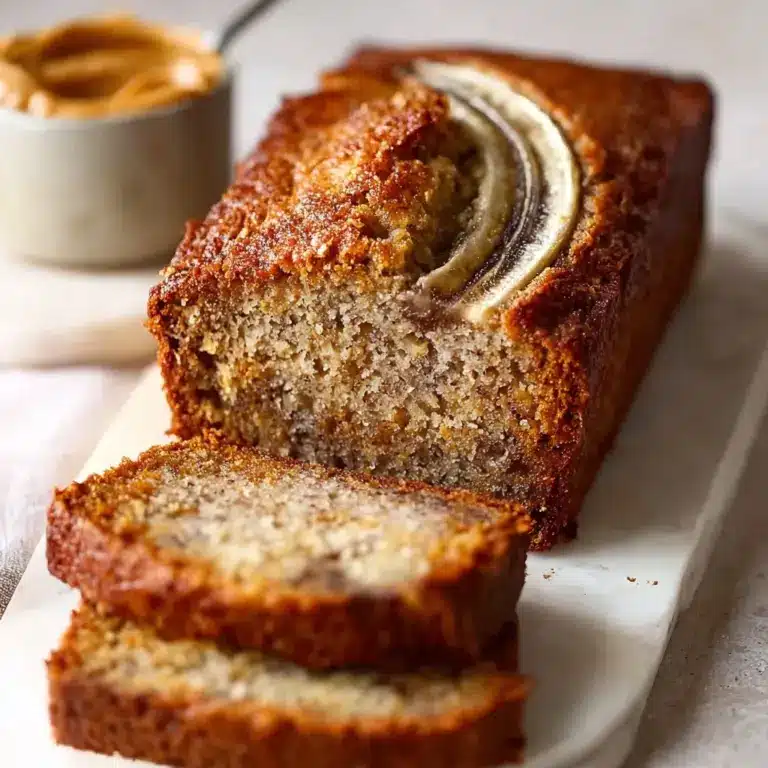Perfect Homemade French Croissants – A Step-by-Step Guide Recipe
If you’ve always dreamed of transforming your kitchen into a little Parisian bakery, this Perfect Homemade French Croissants – A Step-by-Step Guide is about to make that dream come true. Imagine the aroma of buttery, golden pastries wafting through your home and the magical crackle as you tear into one of those flaky layers. With this recipe, you’ll discover that making authentic croissants is absolutely achievable, even for home bakers. Every step, from mixing the dough to that final, irresistible bite, is thoughtfully explained so you can master this bakery classic in your own cozy corner of the world.

Ingredients You’ll Need
These classic ingredients are the heart and soul of any perfect croissant. Each one plays a crucial role, whether it’s building strength, adding tenderness, or lending that unmistakable glossy finish—so treat every component with care and you’ll taste the difference in every bite.
- All-purpose flour (4 cups / 500g): The sturdy foundation that gives croissants their tender yet resilient crumb.
- Granulated sugar (¼ cup / 50g): Just the right amount for a subtle, balanced sweetness and lovely golden browning.
- Active dry yeast (2 ¼ tsp / 7g): The magic leavening that creates beautiful air pockets and that melt-in-your-mouth texture.
- Salt (1 ¼ tsp): Essential for flavor and stopping your croissants from tasting flat or bland.
- Warm milk (1 cup / 240ml): This brings the dough together, adds richness, and encourages gentle fermentation.
- Unsalted butter (10 tbsp / 140g, cold): The hero ingredient for luxurious layers and that signature croissant flakiness—use the highest-quality butter you can find.
- Egg (1, for egg wash): A final brush gives your croissants that gorgeous, bakery-style shine and color.
How to Make Perfect Homemade French Croissants – A Step-by-Step Guide
Step 1: Prepare the Dough
Begin by mixing together the flour, sugar, yeast, and salt in a large bowl—always start with the dry ingredients so everything disperses evenly. Pour in your warm milk, then bring it all together into a shaggy dough. Don’t be afraid to get your hands in there; kneading for a good 8 to 10 minutes will develop strength and make your croissants delightfully chewy yet delicate. Shape the dough into a ball, pop it in a lightly greased bowl, and let it rest in the refrigerator for at least 6 hours or overnight. This slow, cool rise does wonders for flavor and texture!
Step 2: Prepare the Butter Block
While your dough chills, create a neat square of cold butter—the key to those steamy, flaky croissant layers. Sandwich the butter between two sheets of parchment and gently roll it into an even, 7×7-inch square. It should be cold but still pliable; if it gets too soft, chill it again. This step may seem simple, but it’s the secret to success in the Perfect Homemade French Croissants – A Step-by-Step Guide!
Step 3: Laminate the Dough
Now for some croissant magic! Roll your thoroughly chilled dough out to a 10×10-inch square, and nestle the butter block right in the center. Fold the dough corners over the butter, like tucking a present, and press down the edges to seal. Carefully roll the dough into a long rectangle—about 8×24 inches. Fold it into thirds like a letter, then wrap it up and chill for 30 minutes. You’ll repeat this rolling and folding ritual two more times, chilling in between. These layers are where the croissant’s signature flakiness truly takes shape.
Step 4: Shape the Croissants
After the final chill, roll your dough into a large rectangle, about ¼ inch thick. Use a pizza cutter or sharp knife to cut long, pointed triangles—aim for a base of 3 inches and a height of 8 inches. Rolling from the base, gently stretch the dough as you roll up each triangle, finishing with the tip tucked underneath. Lay your croissants on a parchment-lined baking sheet, and let their beautiful shape shine.
Step 5: Proof the Croissants
Lightly cover your croissants with plastic wrap and let them rise at room temperature for about 2 hours. This is where they transform from tidy rolls to chubby, airy pastries. They should become puffy, nearly doubled in size, and feel incredibly light when touched—patience is key for the true Perfect Homemade French Croissants – A Step-by-Step Guide.
Step 6: Bake to Perfection
Preheat your oven to 375°F (190°C). Whisk your egg and brush it over every curve of your croissants for a show-stopping golden glow. Slide them into the oven and bake for 18 to 22 minutes, until they puff, crisp, and turn beautifully bronze. Let them cool ever-so-slightly before devouring—resisting a warm, fresh croissant will be the hardest step of all!
How to Serve Perfect Homemade French Croissants – A Step-by-Step Guide

Garnishes
For a touch of French café flair, try a sprinkle of powdered sugar, a swipe of creamy butter, or a glossy spoonful of homemade jam. A light drizzle of honey or even a hint of melted chocolate can make your fresh croissants feel extra special for brunch or dessert.
Side Dishes
Pair your croissants with a bowl of seasonal fruit, softly scrambled eggs, or a slice of herbed cheese for a balanced breakfast. If you’re enjoying them in the afternoon, a rich hot chocolate or café au lait is a classic, comforting choice.
Creative Ways to Present
Build your own croissant sandwich bar with fillings like smoked salmon, avocado, or whipped ricotta. You can also split and toast your croissants before filling them with ice cream and fresh berries for a dazzling dessert. Sharing a basket of assorted croissants at brunch always feels elegant and effortless.
Make Ahead and Storage
Storing Leftovers
If you have any of these irresistible croissants left, store them in an airtight container at room temperature for up to 2 days. This works wonderfully to preserve their flakiness and freshness—though they’re best enjoyed same-day if possible.
Freezing
To freeze, let your baked croissants cool completely. Wrap them individually in plastic wrap, then pop them in a zip-top freezer bag. They’ll keep perfectly for up to 2 months, making it easy to enjoy a Parisian treat anytime cravings strike.
Reheating
For that just-baked experience, reheat frozen or day-old croissants in a 325°F (165°C) oven for 5-8 minutes. This revives the exterior crispiness and makes the inside beautifully pillowy. A quick warm-up brings all those fresh bakery vibes right back!
FAQs
Can I make the dough ahead of time?
Absolutely! In fact, letting the dough chill overnight—up to a full 24 hours—enriches the flavor and gives your croissants even better structure. You can prepare the dough the night before, then proceed with laminating and shaping in the morning.
What’s the best way to get perfectly flaky layers?
The secret is keeping everything very cold and resisting the urge to rush the chilling between folds. The butter must remain solid (not melted) as you roll and fold, so take your time and refrigerate as needed. This will ensure the Perfect Homemade French Croissants – A Step-by-Step Guide delivers those iconic, crisp layers.
Can I use instant yeast instead of active dry yeast?
Yes, instant yeast works just as well and you don’t have to dissolve it in liquid first—simply mix it into your dry ingredients as usual. Your rise times may be a bit shorter, so keep an eye on your dough and croissants as they proof.
How do I know when the croissants are proofed and ready to bake?
Your croissants are ready when they’ve visibly puffed up, nearly doubled in size, and feel incredibly light to the touch. They should jiggle slightly when you gently shake the tray, which means the yeast has done its work.
My croissants didn’t turn out very flaky—what went wrong?
The most common culprit is butter that’s melted into the dough during the folding process, creating fewer layers. Keep ingredients (and your kitchen, if possible) cool, chill well between folds, and handle the dough gently to preserve your layers. Remember, mastering Perfect Homemade French Croissants – A Step-by-Step Guide takes practice, so don’t be discouraged!
Final Thoughts
I hope this Perfect Homemade French Croissants – A Step-by-Step Guide inspires you to roll up your sleeves and treat yourself to a true taste of Paris. Once you discover how rewarding (and delicious) it is to make croissants from scratch, you’ll want to share them with everyone you love. Happy baking—and don’t forget to savor that first, steamy bite!
PrintPerfect Homemade French Croissants – A Step-by-Step Guide Recipe
Learn how to make perfect homemade French croissants with this detailed step-by-step guide. These croissants are flaky, buttery, and absolutely delicious!
- Prep Time: 7 hours
- Cook Time: 20 minutes
- Total Time: 7 hours 30 minutes
- Yield: 12 croissants 1x
- Category: Breakfast, Brunch
- Method: Baking
- Cuisine: French
- Diet: Vegetarian
Ingredients
Dough:
- 4 cups (500g) all-purpose flour
- ¼ cup (50g) granulated sugar
- 2 ¼ tsp (7g) active dry yeast
- 1 ¼ tsp salt
- 1 cup (240ml) warm milk
Butter Block:
- 10 tbsp (140g) unsalted butter, cold
Egg Wash:
- 1 egg
Instructions
- Step 1: Prepare the Dough – In a large mixing bowl, combine the flour, sugar, yeast, and salt. Add warm milk, knead until smooth, then refrigerate for at least 6 hours.
- Step 2: Prepare the Butter Block – Roll cold butter into a square, refrigerate until firm but pliable.
- Step 3: Laminate the Dough – Roll out dough, fold butter block in, fold dough, chill, repeat twice.
- Step 4: Shape the Croissants – Roll dough, cut triangles, roll into croissants, place on baking sheet.
- Step 5: Proof the Croissants – Let croissants rise at room temperature until doubled in size.
- Step 6: Bake to Perfection – Brush with egg wash, bake at 375°F (190°C) for 18-22 minutes until golden brown.
Notes
- You can freeze the shaped croissants before proofing for later baking.
- Ensure butter is cold and dough is well chilled for best results.
Nutrition
- Serving Size: 1 croissant
- Calories: 280
- Sugar: 6g
- Sodium: 250mg
- Fat: 14g
- Saturated Fat: 9g
- Unsaturated Fat: 4g
- Trans Fat: 0g
- Carbohydrates: 32g
- Fiber: 1g
- Protein: 5g
- Cholesterol: 50mg
Keywords: French croissants, homemade croissants, breakfast pastry, baking








